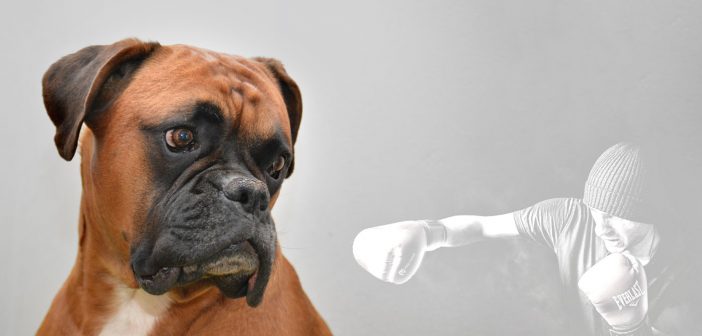The Boxer is a modern breed, developed around 1890. While sometimes a boxer looks like, well, a boxer (particularly if it stands on its hind legs and paws to play), it more likely got its name from the German word beisser (biter) since it is a descendant of the German Bullenbeisser (bull biter).
The boxer is actually descended from a combination of the bulldog and the German “Bullbeisen,” a hunter of wild boar and bears. It appears that the first actual Boxer probably sprang from “Tom,” an all white bulldog mated to a Bullbeisen female. This may explain the prevalence of all white boxers which are often produced in litters today.
Many of today’s boxers have white markings on the face, chest and legs. The first standard for the Boxer breed in the American Kennel Club was drawn up in 1905 and has been changed several times since then, as it is still a continually developing breed.
One might believe that the Boxer, because of the formidable temperament possessed by its ancestors, would be fierce and possibly aggressive. However this is very far from the truth. Careful breeding and years of selection for temperament have produced a fine dog which has an extraordinary temperament that is intelligent and responsible.
The Boxer has been used as a guard dog, a guide dog for the blind, and as a police dog. The Boxer is considered a “working dog” and has become an excellent family pet, non-drooling (sometimes) and easy to care for as far as coat is concerned. The Boxer is a naturally clean dog, exuberant as a youngster, but usually settles into a well mannered and affectionate family pet in later years.
Boxers do love to play and they have a hardy constitution, they can do well as a “jogging companion” except in the heat of the day, when their slightly brachycephalic (short stub) nose will not allow for easy breathing. Boxers usually live to about the age of 12.
Boxers can be any color, the most popular being the red and white. Brindle, black and white, and all white are also seen. It is true that often the all white Boxer also carries the genetic component of deafness and should not be used for breeding.
The fashion for many years was to “crop” the ears but recently laws have been passed in Great Britain and Europe and it is now frowned upon, so more and more Boxers have naturally folded ears! However the tail is still often docked. This is partly due to the fact that a longer tail, especially on a dog that wags its tails so much, can be beaten bloody from wagging and hitting it against various objects. In fact, the hairppy disposition is one of the best characteristic traits of the Boxer.
Boxer owners know that this is a special breed, most of them will never settle for any other once they have had a Boxer as part of their life.




